
Every person generates waste, it is a fact of modern life. It is a consequence of the pervasive linear economic model based on extraction, production, consumption and disposal. A model that implies a high environmental cost, both when producing products and at the end of their life cycle.
The circular economy model, also known as circular design, is another, more sustainable system, which makes the most of resources and gives a new life to the waste we generate.
What is circular economy and why is it also called “circular design”?
The circular economy shuns the current throwaway system and opts for a more environmentally friendly system based on prevention, reuse, repair and recycling, not only in the product itself but also in its manufacturing process, which has a great environmental impact.
The circular economy is based on the well-known 3Rs – Reduce, Reuse and Recycle – and places great emphasis on the fact that products have to be more sustainable from the design itself, introducing other concepts into the chain such as re-design and repair, extending the 3Rs to the 7Rs:
Integrating design into this circular economy approach is what gave it´s nicknames “circular design” or “universal design”. In short, the circular economy makes it possible to extend the useful life of products and give them a second life from the very moment they are created.
The Bios urn closes the circle: A perfect example of circular design.
The Bios Urn ® was the very first biodegradable funeral urn in the world designed to turn people or pets into trees after the cremation process.
The Bios Urn ® was conceived in 1997 as a sustainable design project by Gerard Moliné, a designer with extensive experience in the development of natural products and projects and founder of the Bios Urn Environment company. A few years later, the first prototypes were designed and manufactured, going on to win several design awards, and the brand and design of the urn were registered. The idea to start marketing this innovative product through the internet was aimed at changing the way people deal with the end of life in what is arguably a very traditional and conservative sector. It has since been exhibited in many design museums around the world, including the Museu de Disseny in Barcelona, the Cube Design Museum in the Netherlands, the renowned design festival Gdynia Design Days in Poland, the Red Dot Design Museum Xiamen in China and the Museum of Design Atlanta (MODA) in the USA.
This is a product that is aimed at a broad group of people who are aware and concerned about the respect of nature and environmental sustainability as a whole. On the company’s website you can see testimonials from people who have used the Bios Urn® from different countries, ages and backgrounds. It is therefore a solution that democratises access to keep the memory of our loved ones with an economical and environmentally friendly product.
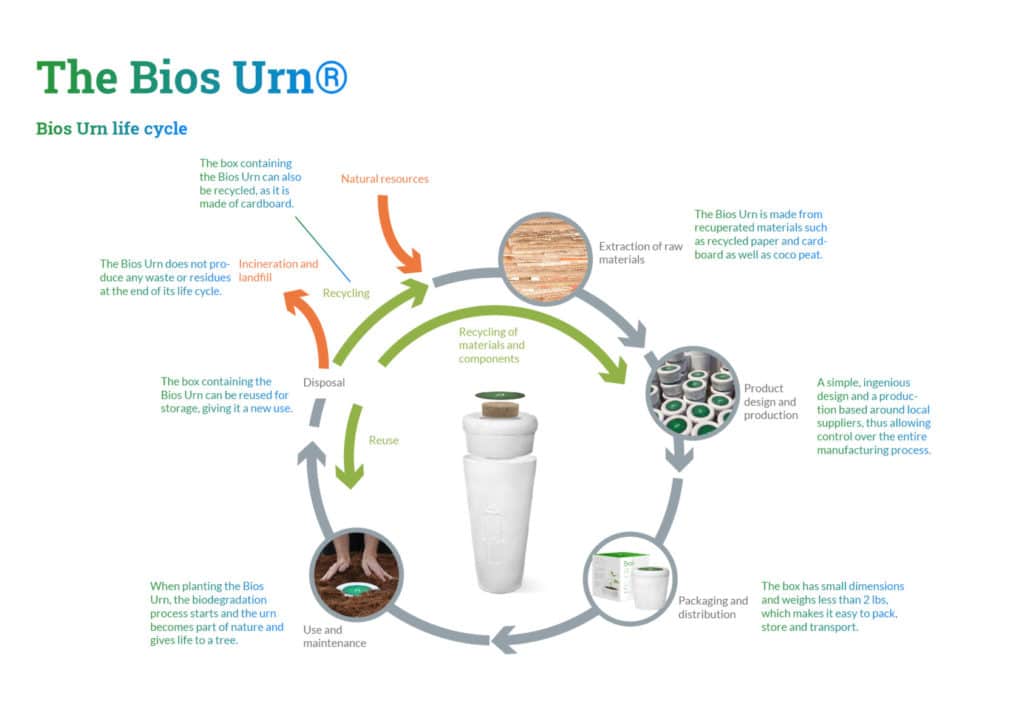
The Bios urn closes the circle. It is a perfect example of circular design. Image copyright: Bios Urn
The urn consists of two types of materials: those of the storage/transport box and those of the urn itself. The box that protects the urn is made of recycled cardboard and the band around the urn is made of paper.
In addition, the urn is moulded from cellulose composed of recovered paper and cardboard. The cover is made of paper tinted with non-toxic inks. Inside the upper capsule is a pressed soil expansion disc made of vermiculite and coco peat, both natural elements, the former a mineral and the latter a vegetable derivative. These elements allow the accumulation of humidity in the upper capsule, which allows the adequate germination of the seed, which is placed with the soil expansion disc and completed with soil from the place where the urn is planted.
All these materials are transported by land from the different suppliers to the local processing plant. The urn materials are biodegradable and disintegrate into the soil progressively once the urn is planted. The materials of the box are recyclable, in fact the box itself can be reused for other purposes such as storing objects.
The Bios urn does not generate waste, as its use involves its biodegradation and incorporation into the soil where it has been planted.
It is paradoxical that such a simple yet extremely ingenious product can change the way we understand death and life.
The Bios Urn ® was conceived with the seven principles of universal design in mind.
Circular design is based on seven key principles that are all represented in the design of the Bios Urn ®.
1. Equal use.
The design of the Bios® Urn is useful for everyone, offering a solution for everyone regardless of their purchasing power for that inevitable phase of life: death.
2. Flexible use.
The minimalist design of the Bios Urn ® is compatible with any type of seed or sapling so that the chosen species can grow in any climate in the world. It can also be planted directly in the ground or in a planter and can be stored for years, or even decades, until it is ready for use. In addition, it can be used without ashes, allowing you to perform the ritual of bringing an absent loved one back to life whichever the circumstances.
3. Simple and intuitive to use.
How to use the Bios Urn ® is very easy to understand, regardless of the user’s previous experience or knowledge. It is similar to planting a tree or a plant.
4. Perceptible information.
The intentional design of the Bios Urn ® consists of two capsules: the lower capsule houses the ashes resulting from the cremation process, and the upper capsule, which acts as a closure, is where the elements for growth are placed: vermiculite and coco peat, together with the seed selected by the user and soil from the place where the urn will be planted. This mixture allows moisture to be retained in the upper capsule and thus favors the conditions for seed germination and subsequent growth.
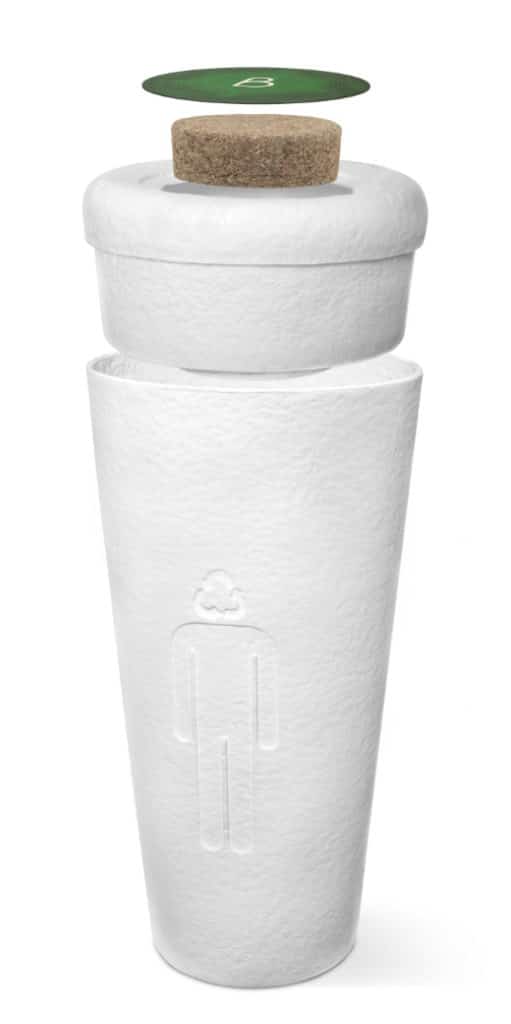
The intentional design of the Bios Urn ® consists of two capsules: the lower capsule houses the ashes resulting from the cremation process, and the upper capsule, which acts as a closure, is where the elements for growth are placed: vermiculite and coco peat, together with the seed selected by the user and soil from the place where the urn will be planted. Image copyright: Bios Urn
5. Tolerance to error.
The design of the BiosUrn ® minimises risks and adverse consequences of unintentional or accidental actions. Any error in its use can also be reversed without difficulty.
6. Minimal physical effort.
The design of the Bios Urn ® allows it to be used comfortably and minimises physical effort. The urn can be purchased online and can be shipped anywhere in the world. The transfer of the ashes is simple and can be done in the comfort of one’s own home. A relatively small hole about 20 cm in diameter and between 20 and 40 cm deep has to be dug to plant the urn.
7. Adequate size to enable approach and use.
This refers to the need to provide adequate size and space in order for the user to approach, reach, handle and use the product regardless of the body size, posture or mobility of the person acquiring it. The Urn can be planted in a garden, a forest, a field, on a walking trail or even in a pot.
The circular design of the Bios urn.
The Urn is therefore a simple, practical, economical, sustainable and nature-friendly product that, in the words of the company, “allows us to remember our loved ones in a natural and sustainable way, thus turning the process of death into a regeneration and return to life through nature”.
Also the Bios urn is a good example of circular design that is aligned with economist William McDonough’s Hanover principles of sustainable design. Similarly, recalling economist Victor Papanek and his numerous references to socially-responsible designers, it would be hard to find a better example that follows his recommendations.
Circular design in our future
In short, any new innovation should strive to be sustainable from it’s design. Economist Ezio Manzini evokes the redesign of behaviors and innovation focused on sustainable lifestyles and new ideas of well-being.
The creation of the Bios Urn ® demonstrates that there is always room for sustainable innovation. The Urn is an economical, sustainable and environmentally-friendly solution to preserve the memory of our loved ones, both people and pets, in what is considered quite a traditional and extremely contaminating sector.
The long-term vision of the company is to turn cemeteries into forests.
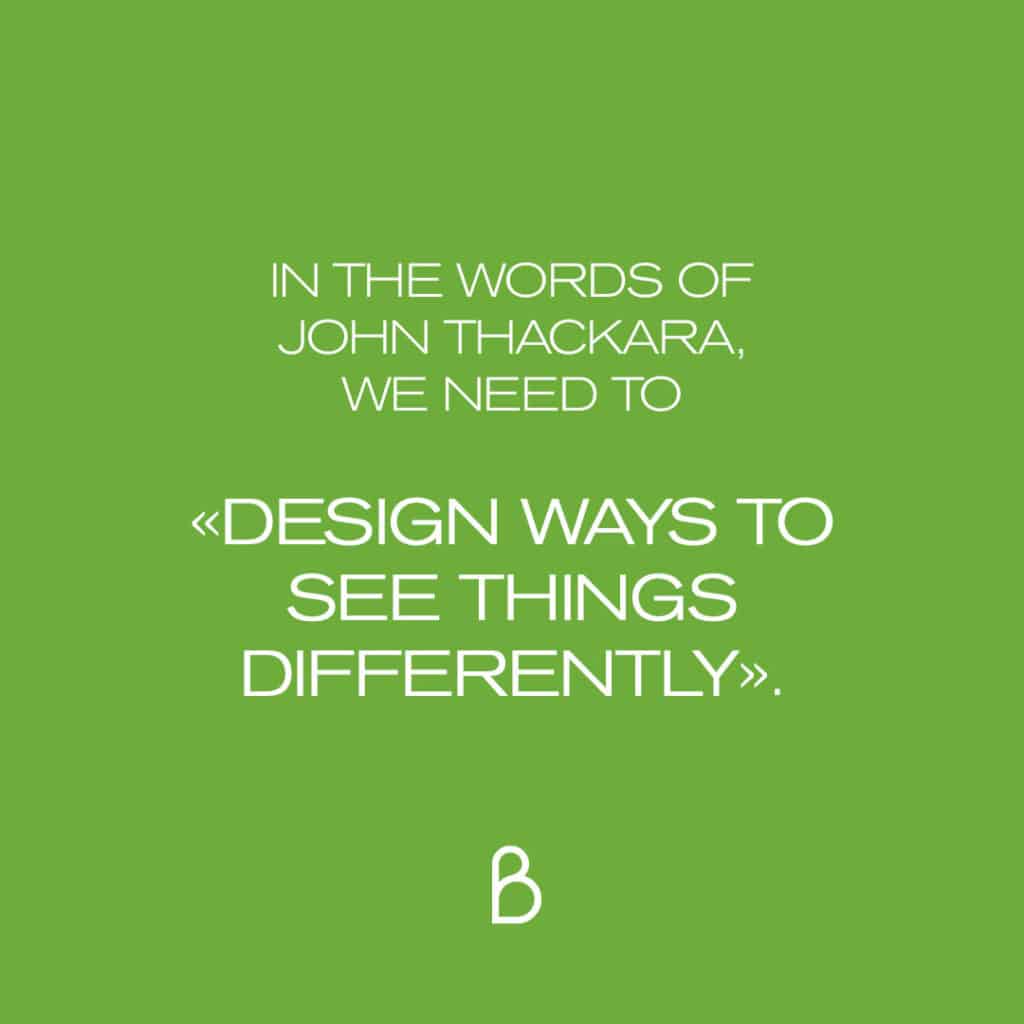
John Thackara is a British-born writer, consultant and public speaker. He is also known as “the designer of sustainability”. Image copyright: Bios Urn
What do you think of the circular design of the Bios Urn ®?
We would love to hear from you in the Comments section below!
To keep up to date with all the latest Bios Urn ® news and stories, you can follow us on Facebook, Instagram, Twitter, Pinterest and YouTube!
Join our mailing list to keep you updated of all Bios® news and get a 10% Discount!
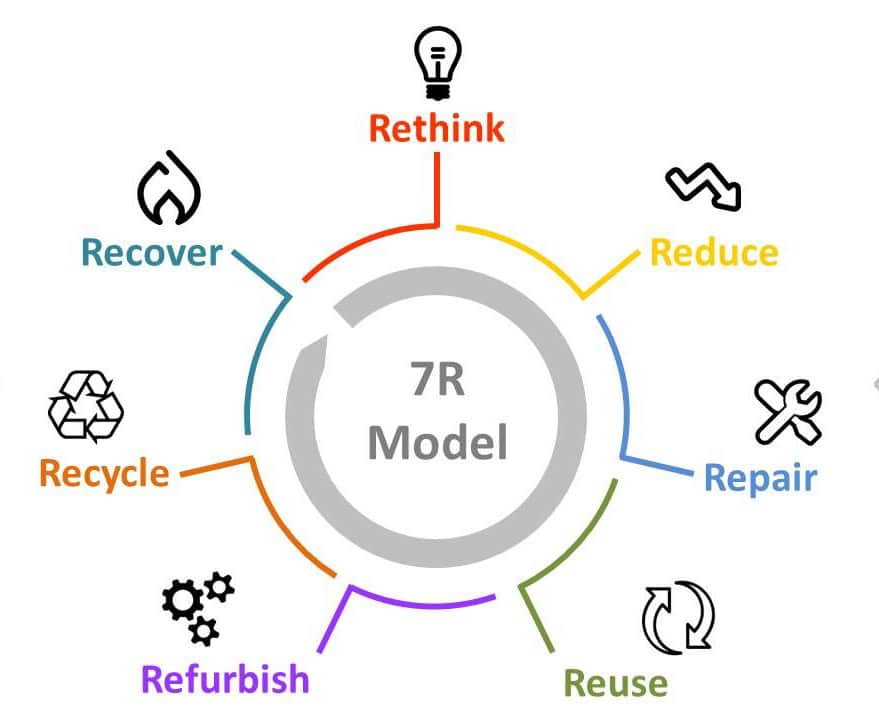
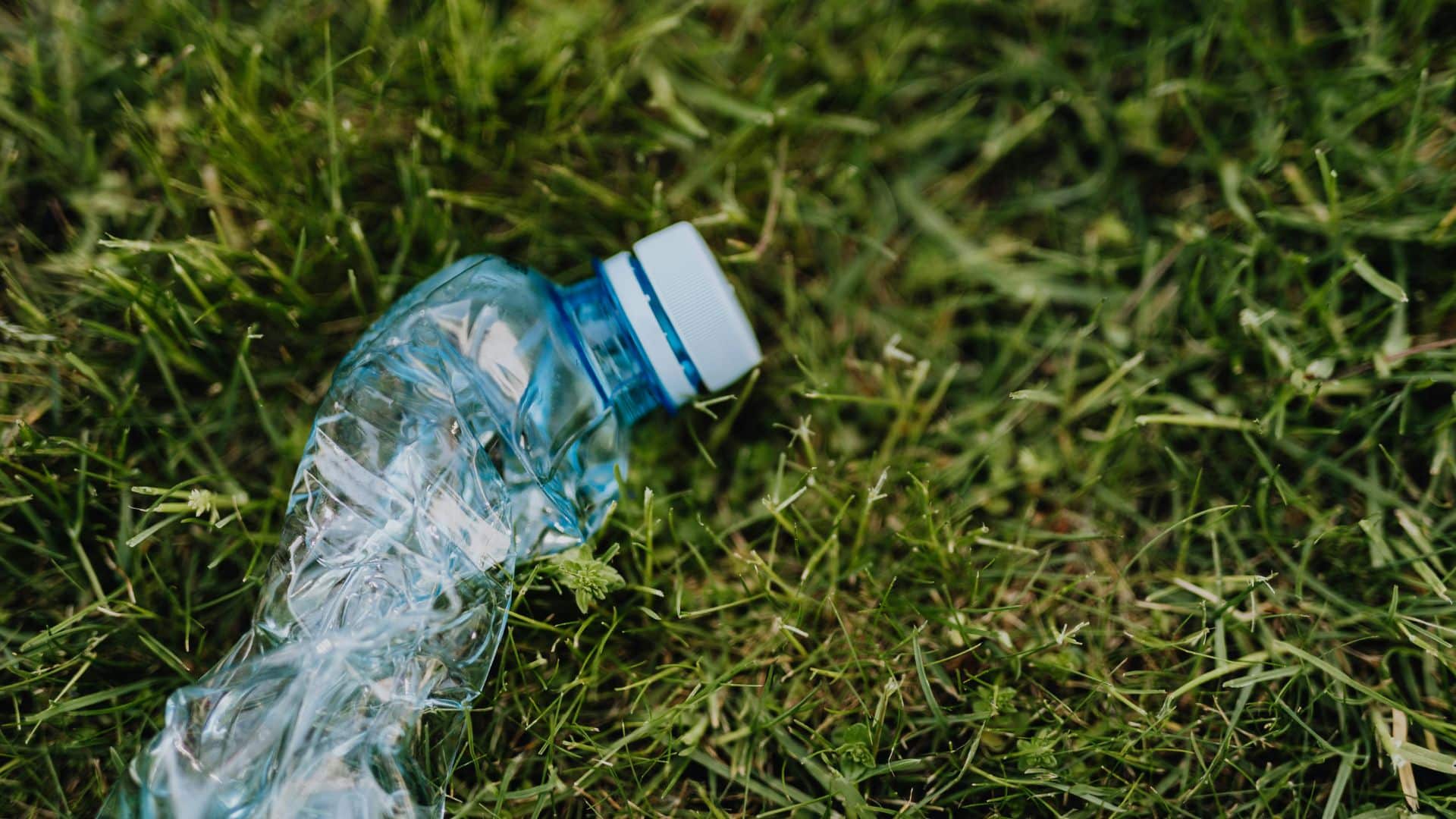
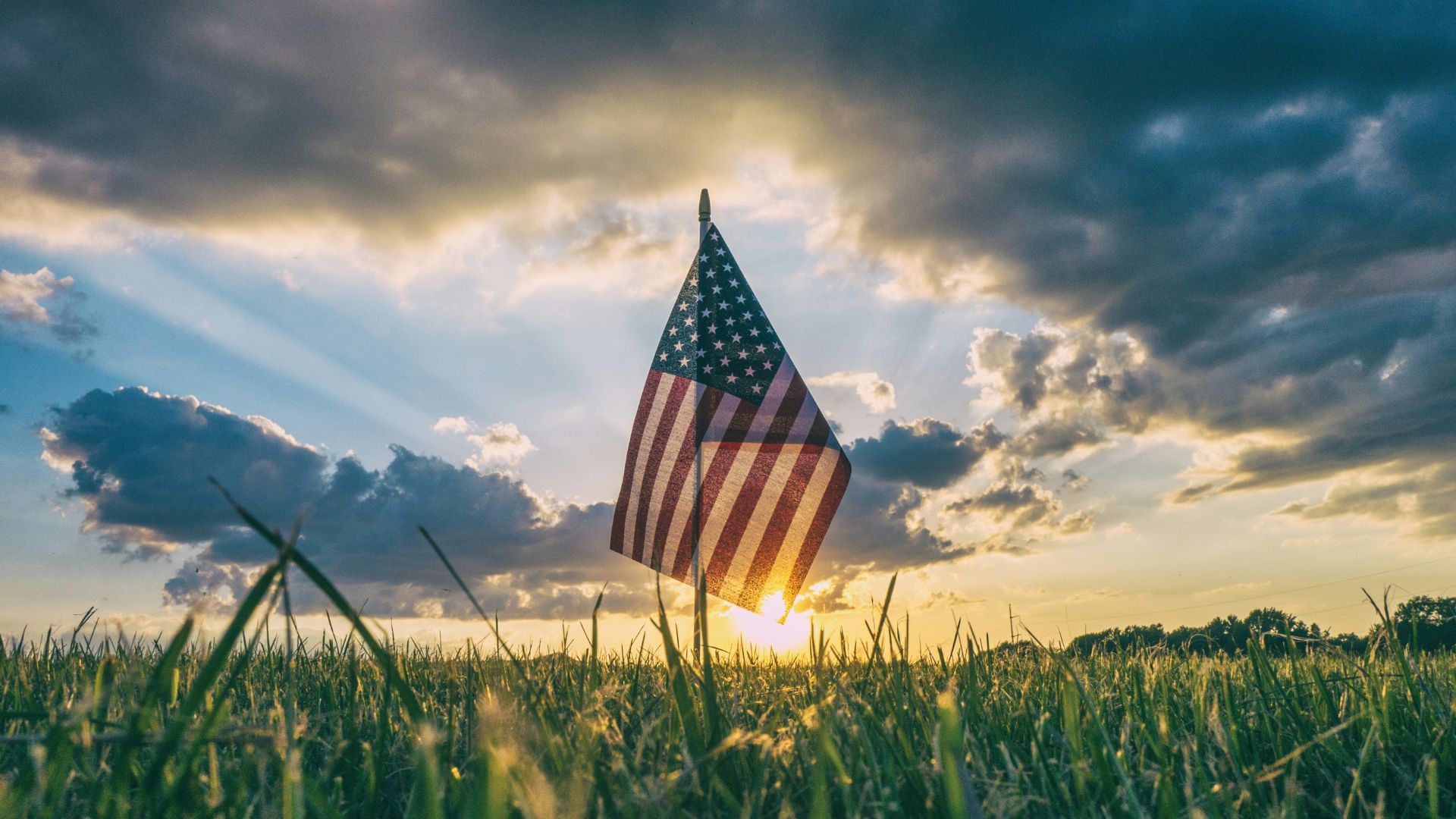
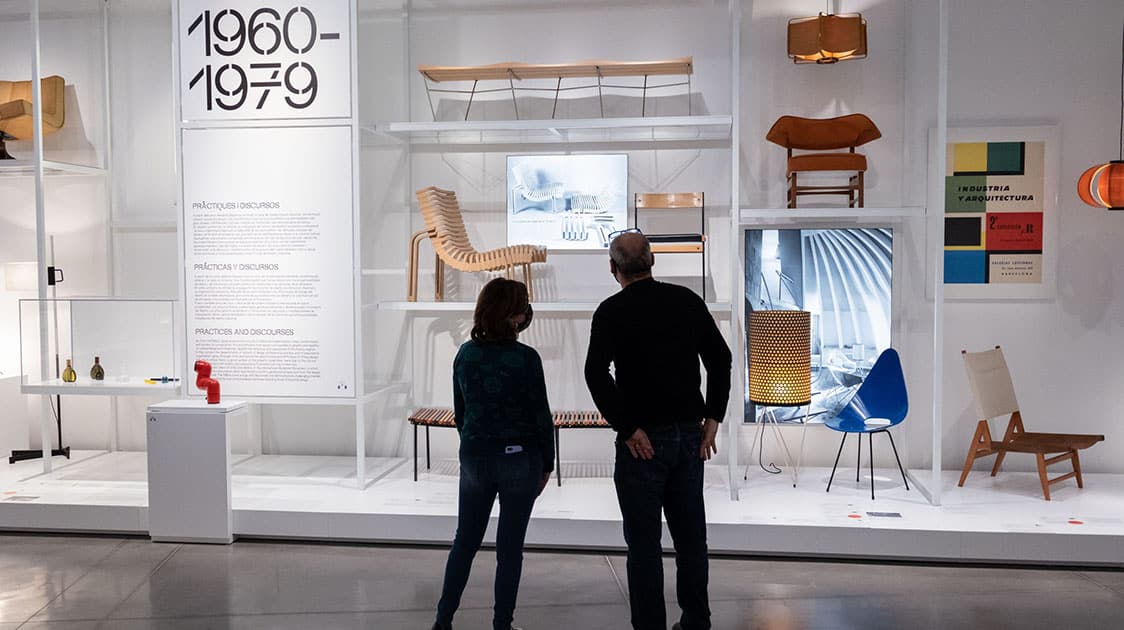
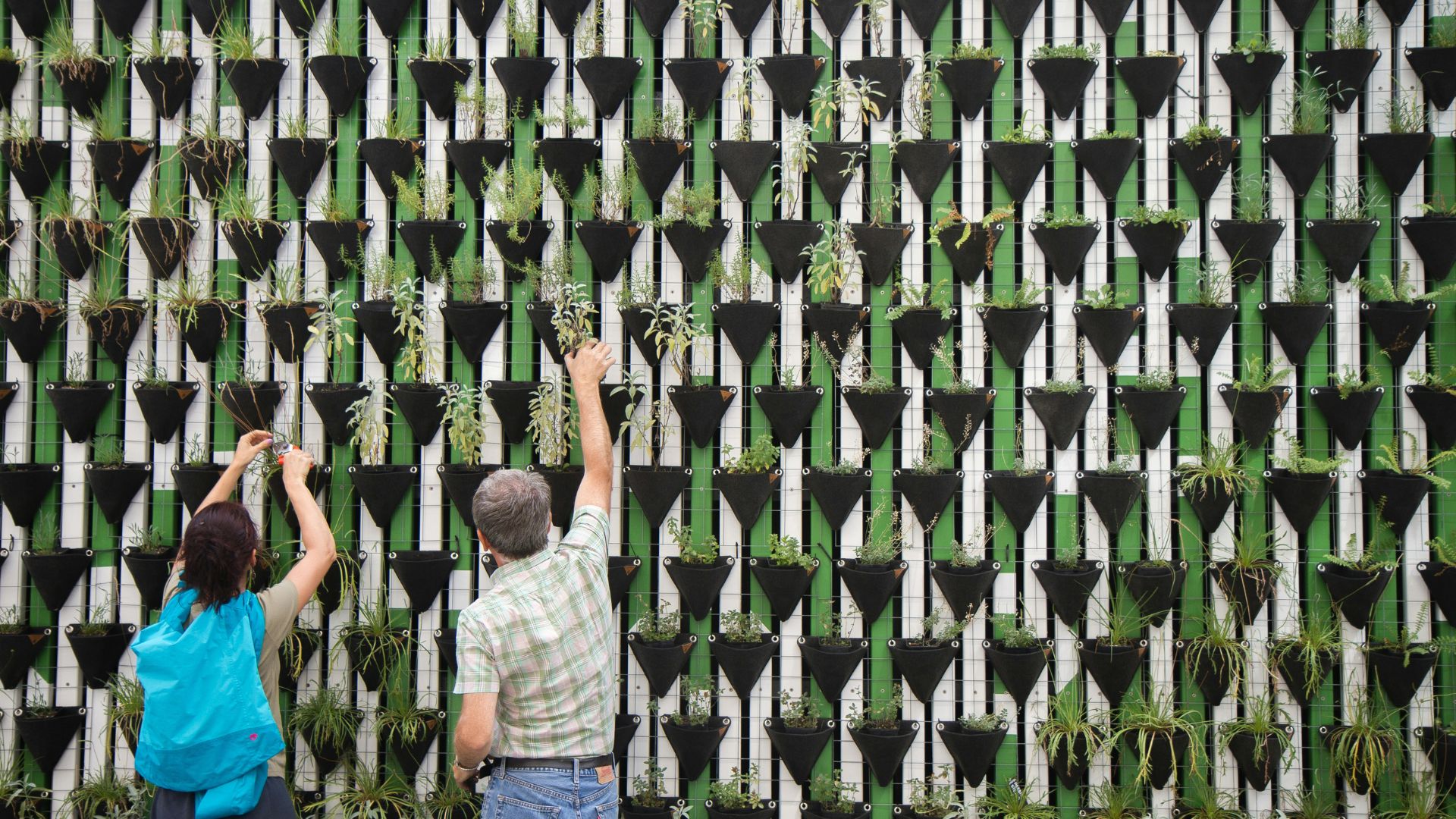
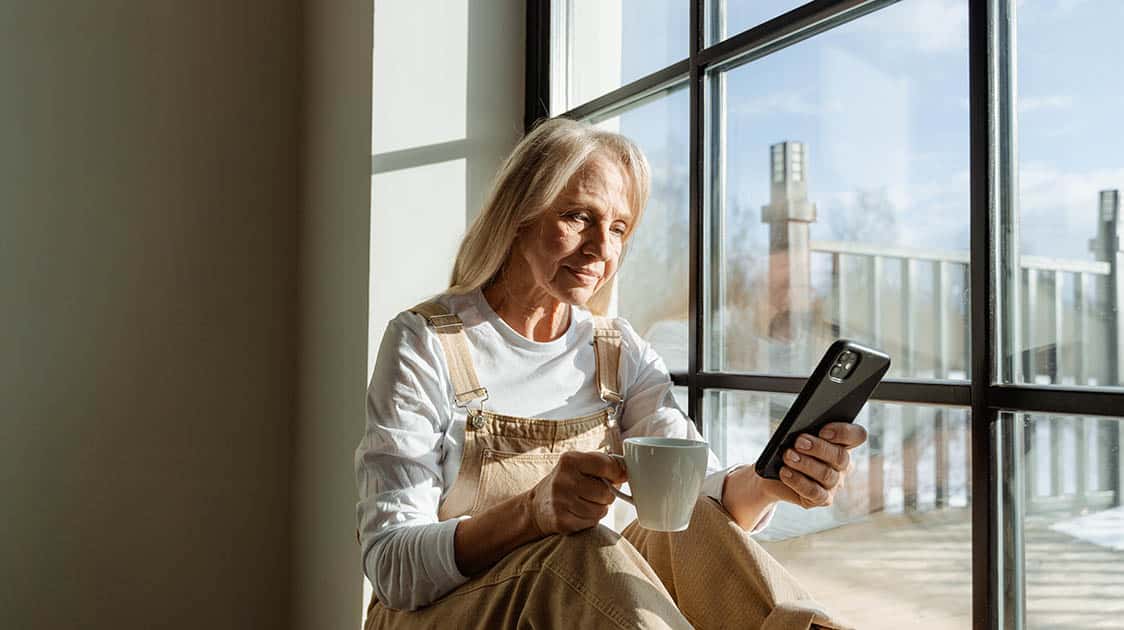
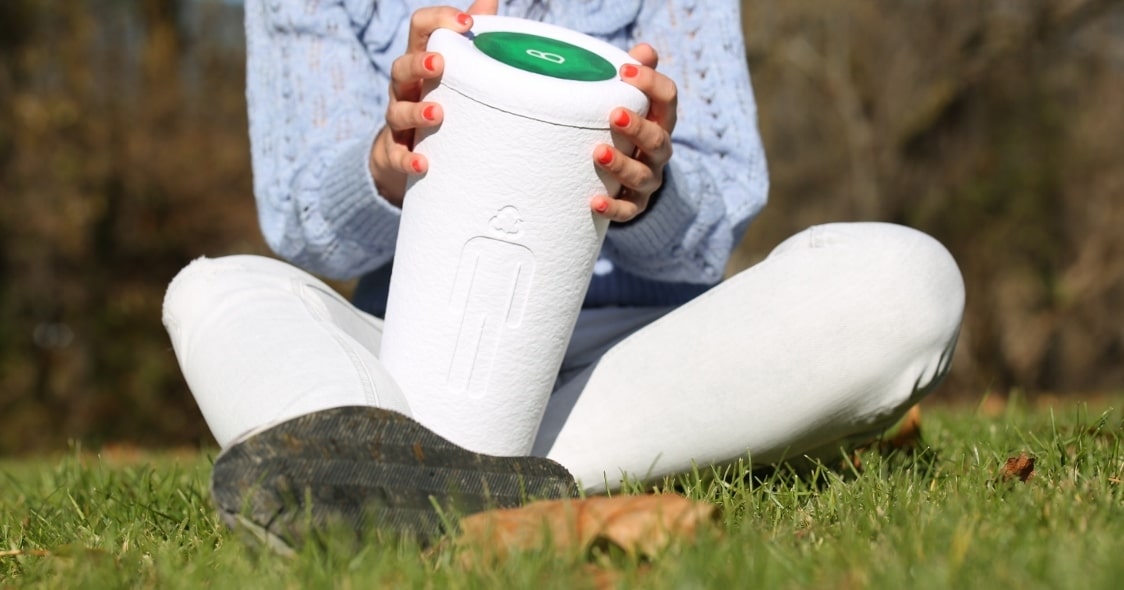
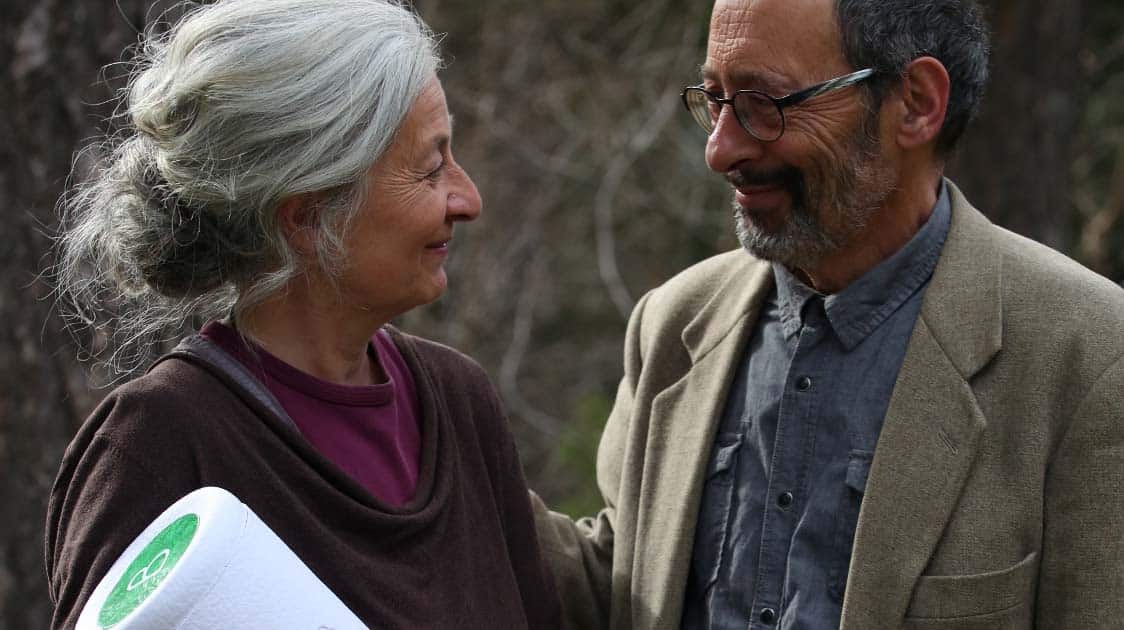
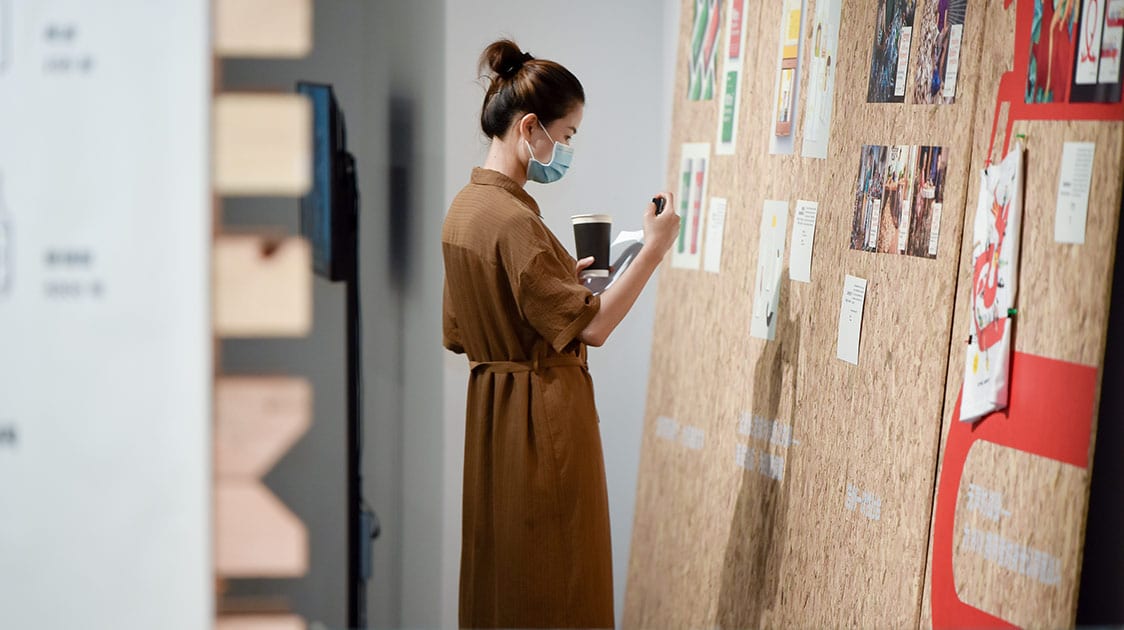
Leave a Reply